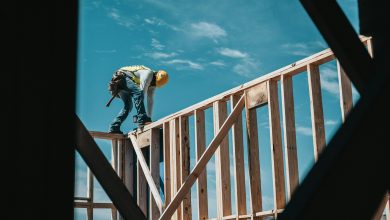The standard 240 litre bin represents the workhorse of waste collection systems globally, serving households with above-average waste generation and small commercial operations. This capacity emerged from operational research showing it balances collection efficiency against manual handling safety limits—a fully loaded 240-litre bin approaches 100-120 kg, near the maximum recommended weight for mechanical lifting systems. Waste industry data indicates these bins handle 60-70% of commercial waste collection in retail, office, and hospitality sectors. Construction quality differences determine whether bins provide reliable service for a decade or require replacement within 3-4 years.
Structural Engineering for Increased Capacity
Scaling from 120 to 240 litres doubles waste capacity but more than doubles structural demands. The larger surface areas experience higher wind loads, and the additional weight when full creates substantially greater stress on wheels, handles, and lifting points. Engineers calculate that doubling capacity increases structural stress by 2.5-3 times in critical areas.
Quality 240-litre bins compensate through thicker walls (4-6mm versus 3-4mm) and additional reinforcement ribs. These ribs, typically 8-12mm thick and spaced 150-200mm apart, distribute loads and prevent flexing that causes stress cracks. Finite element analysis shows properly ribbed designs reduce peak stress concentrations by 40-50% compared to un-ribbed construction.
Material Selection for Commercial Durability
Commercial applications subject bins to harsher conditions than residential use—more frequent collection, rougher handling, exposure to diverse waste types including potentially corrosive materials. Premium 240-litre bins use virgin HDPE with enhanced impact modifiers increasing toughness by 30-40% over standard formulations.
Material testing laboratories subject these formulations to cyclic impact testing at various temperatures. Commercial-grade materials maintain impact resistance above 60 joules at temperatures down to -25°C, while residential-grade materials drop below 40 joules at -15°C. This difference becomes critical in regions experiencing cold weather, where bins handled roughly during collection develop cracks that propagate during freezing conditions.
Wheel Systems and Load-Bearing Design
The 240-litre bin’s greater weight necessitates more robust wheel systems. Standard implementations use 200-250mm diameter wheels compared to 175-200mm wheels on 120-litre bins. Larger diameter wheels roll more easily over obstacles and distribute ground pressure across larger areas, reducing surface damage on soft ground.
Load capacity ratings matter significantly. Quality wheels specify load ratings of 150-200 kg per wheel, providing adequate safety margin. Budget bins sometimes use wheels rated at 80-100 kg that work initially but wear rapidly, developing flat spots or cracking. The wheel bearings should be sealed ball bearings rather than plain bushings that bind after exposure to dirt and moisture.
Commercial Collection System Integration
Many commercial properties use bins integrated with hydraulic tipper frames or mechanical lifters. These systems place different stresses on bins compared to residential collection. The bin’s lifting pocket or rim must withstand not just vertical lifting forces but also the impact shock when bins get deposited back on the ground after emptying.
Impact testing simulates this by dropping loaded bins from 300-500mm heights onto concrete repeatedly. Commercial-grade bins survive 1,000+ impact cycles without cracking, while lighter construction fails within 200-400 cycles. The difference lies in reinforced base construction and shock-absorbing design features like slightly flexible feet that cushion impacts.
Lid Sealing and Odor Control
Commercial waste, particularly from food service operations, generates significant odors if bins don’t seal properly. Quality lids incorporate continuous rubber or synthetic seals running the full perimeter. These seals should compress 2-3mm when closed, creating effective barriers against odor and pest entry.
The lid’s closing mechanism affects seal effectiveness. Spring-loaded or counterbalanced lids that close automatically maintain better seals than simple gravity-close designs where lids often rest slightly ajar. Testing shows proper sealing reduces odor emissions by 70-80% and pest access by 90%+ compared to poorly sealing lids.
Identification and Asset Management Features
Commercial operations managing multiple bins benefit from identification systems. Molded-in spaces accommodate labels, tags, or embedded RFID chips for tracking. Some manufacturers offer custom color combinations or printed graphics for brand consistency or waste stream identification.
Modern waste management increasingly uses RFID or barcode systems tracking individual bins through collection routes. These systems verify service completion and can implement usage-based billing. Bins designed with dedicated tag mounting points prevent tag damage during normal handling and collection cycles.
Maintenance and Cleaning Considerations
Commercial bins require regular cleaning to maintain hygiene standards and prevent deterioration. Smooth interior surfaces without excessive ribbing or texture simplify cleaning. Some designs incorporate drain holes allowing wash water to exit, though hole placement must prevent normal waste leakage.
Interior surface finish affects cleaning too. Glossy finishes resist staining and clean more easily than matte textures. However, glossy surfaces show scratches more readily from sharp waste materials. Commercial operations often prefer semi-gloss finishes balancing cleanability against scratch visibility.
Lifespan Economics and Replacement Planning
Quality 240-litre bins cost $80-150 depending on specifications, while budget options sell for $50-80. The price difference seems significant until you factor in replacement frequency. Budget bins lasting 3-4 years cost $12.50-26.67 annually, while quality bins serving 10-12 years cost $6.67-15 annually.
This calculation ignores operational disruptions when bins fail between scheduled replacements, requiring emergency purchases and service interruptions. Fleet managers report that standardizing on quality bins reduces annual waste management costs by 15-20% through reduced replacement needs and fewer service issues.
Temperature Performance and Climate Adaptation
Bins serving different climates need different material specifications. Hot climates with intense sun exposure require enhanced UV stabilization preventing brittleness. Cold regions need impact modifiers maintaining flexibility at low temperatures. Some manufacturers offer climate-specific formulations optimized for regional conditions.
Testing across temperature ranges verifies performance. Bins should withstand continuous exposure to 60°C surface temperatures in direct sunlight without warping, and maintain impact resistance at -30°C ambient temperatures without cracking. These specifications ensure reliable service across diverse environmental conditions.




